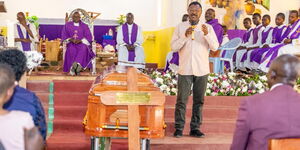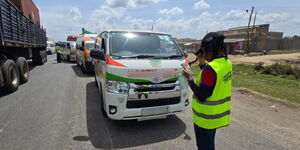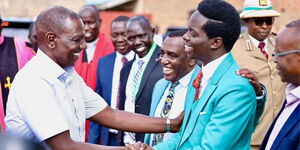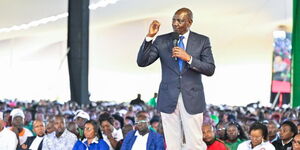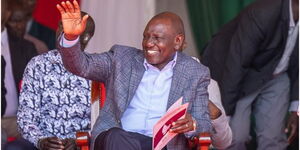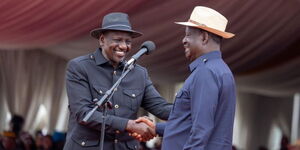National Assembly Speaker Moses Wetang’ula is set to represent Kenya at the burial of Pope Francis on Saturday, April 26, at St Peter’s Square in the Vatican.
While speaking as he led a group of Members of the National Assembly in offering their condolences at the Apostolic Nunciature in Nairobi, Wetang’ula revealed President William Ruto had nominated him to represent Kenya at the solemn event.
Wetang’ula is set to depart the country this evening to attend the funeral of the late Pope Francis and join a host of notable world leaders in the event.
United States President Donald Trump, French President Emmanuel Macron, Prince William and Prime Minister of the United Kingdom Keir Starmer are some of the leaders expected to attend the Pope’s funeral.
United Nations Secretary-General Antonio Guterres, Javier Milei of Argentina, where the Pope was born, and Dutch King Willem-Alexander are also expected to attend the event that will commence from 11:00am.
The funeral on Saturday will cap almost a week of mourning for Francis, whose advocacy for migrants, the poor, the marginalised and those suffering under war often put him directly at odds with some of the powerful people who will pay their respects to him inside St Peter’s Basilica.
In the aftermath of his passing, the Vatican released the Pope’s spiritual testament, dated 29 June 2022, giving indications for his burial in the Basilica of Saint Mary Major. The Pope passed away on Easter Monday, April 21, aged 88, after a prolonged illness during which he battled double pneumonia for over one month.
In his testament, Pope Francis requested that his tomb should be in the ground, simple, without particular ornamentation, bearing only the inscription: Franciscus.
The traditional burial process of a pope is itself a complex one, as it sees a Pope buried in three coffins. It entails a ritual rich in symbolism and tradition.
Upon confirmation of his passing, the Vatican notifies the College of Cardinals and Catholic leaders, after which a nine-day mourning period, known as “Novemdiales," during which daily Masses will be held in the Pope's memory.
The late pope's body will be washed, then dressed in red and white papal vestments before being placed in a dignified setting for public viewing. Since his demise, thousands of faithful have attended the daily masses and viewed his body.
The three coffins
Historically, the Pope is buried following a tradition involving three coffins. First, his body is placed in a cypress wood coffin symbolising humility, along with a white silk veil, a biography in a lead tube, and medals and coins from his reign.
This is then sealed and placed inside a zinc or lead coffin, which is airtight, to signify his eternal spiritual legacy. Finally, both are enclosed in a sturdy oak coffin marked with a gold cross and the papal coat of arms for protection.
However, last year Pope Francis approved new rites that eliminated the practice entirely. He approved reforms to the funeral rites in the "Ordo Exsequiarum Romani Pontificis", or "Rite of Burial for Roman Pontiffs", simplifying several elements. Among them: scrapping the triple coffin in favour of a more modest burial using a wooden coffin with a zinc interior.

